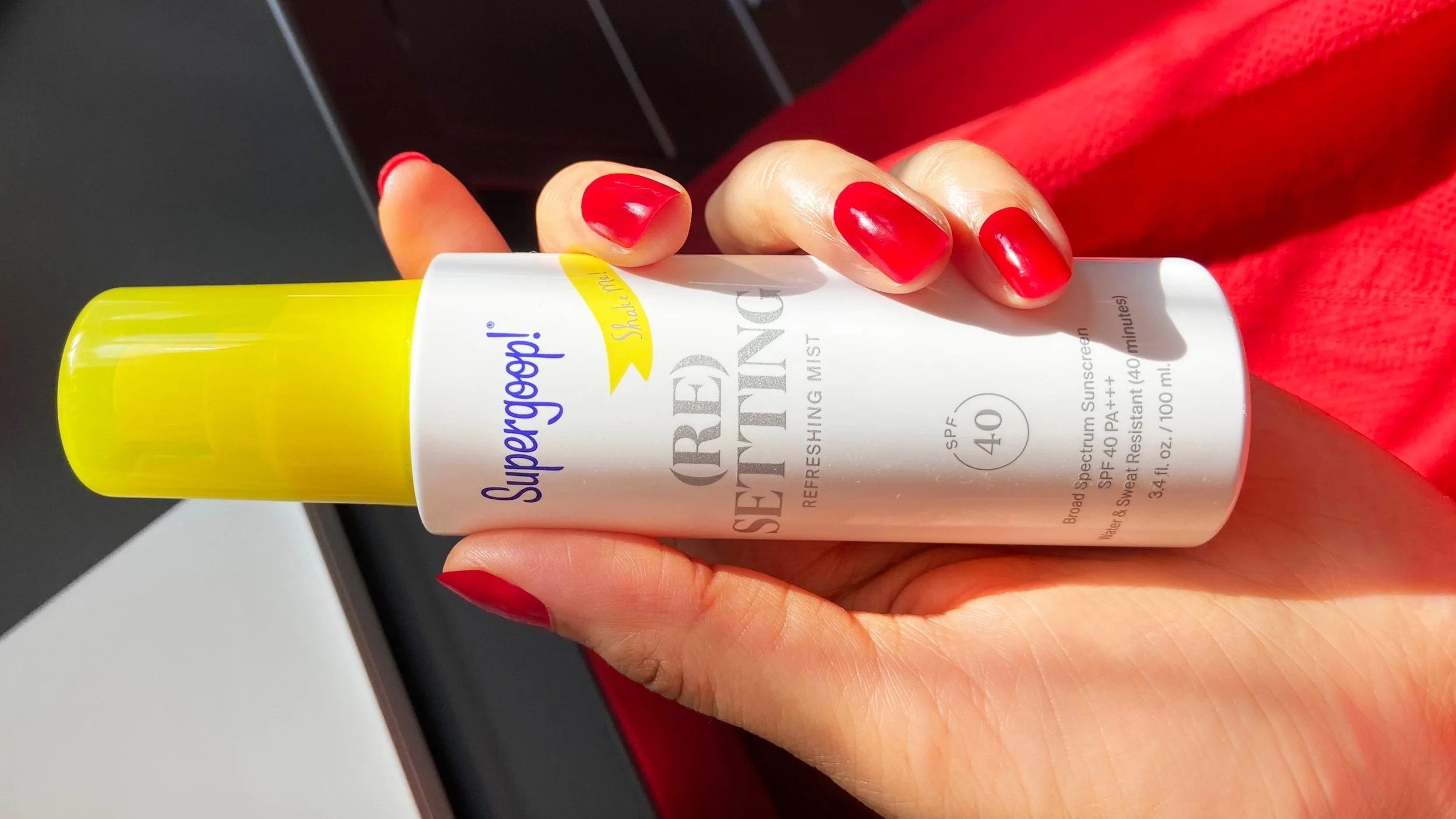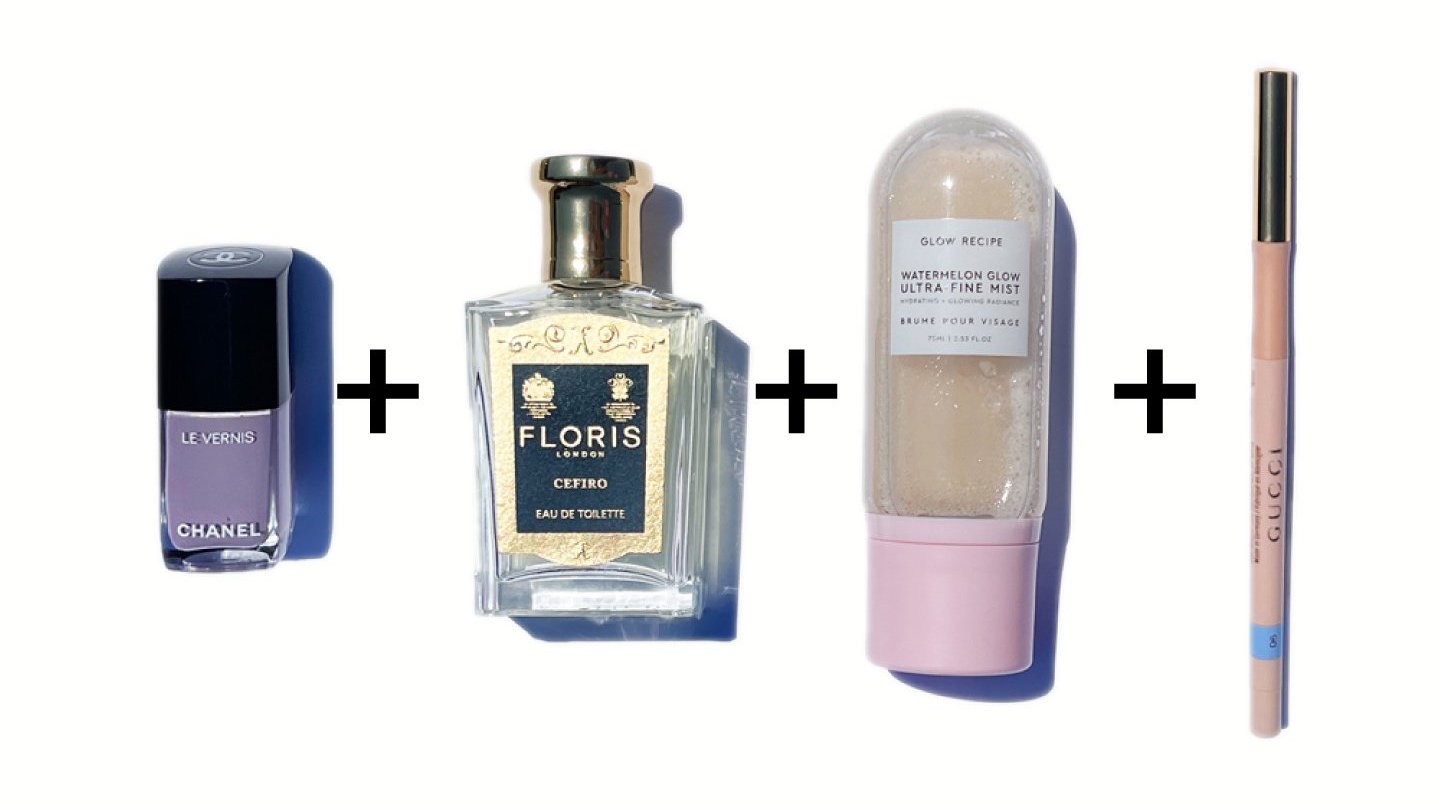Supergoop: How Super Is It?
We wear cosmetic sun protection to prevent skin cancers, not get them. So the negative coverage on aerosol sun protection products for their carcinogen connection in 2021 was, shall we say… inconvenient.
Just when the masses were ready to get their post-pandemic Summer fun, several reputable brands like Neutrogena and Banana Boat recalled their products because the carcinogenic chemical called benzene was found in them. This is not an intentional sunscreen/block ingredient, but instead found in fumes from cigarettes, volcanoes and coal. Clearly, it was shocking to see go-to products go off shelves because of this link.
Check It:
Well before the recall and pandemic, I tried a travel size of Supergoop Defense Refresh Mist SPF 50. This was perfect for a trip because it provided a light layer of protection over makeup. Fast-forward to two years later, I bought their full-size, rebranded (Re) Setting Mist SPF 40. Though Supergoop was not on the list of tested SPFs, I was a tad skeptical about potential damage to my skin this may cause due to ongoing scientific research on potentially harmful components in sun protection beauty products. I let it go (sorta) because they have presented themselves as a transparent company and developed a trust with consumers.
Sorta…
Despite distinctive branding and cute packaging, nearly all sun care products use the same active reagents*^. This underlies the importance of considering similarities and differences between Supergoop** and recalled brands. With slight contrasts in percentages, recalled Neutrogena Ultra Sheer (Face Mist) uses the same basic formula of active chemicals as Supergoop.
SG: Avobenzone (2.9%), Homosalate (9.8%), Octisalate (4.9%), Octocrylene (9.5%)
NG: Avobenzone (3%), Homosalate (10%), Octisalate (5%), Octocrylene (10%)
Avobenzone is widely used in numerous chemical sun protection brands as an ultraviolet*** light absorber. Oddly, it is very unstable on its own when exposed to light and resulting breakdown products can damage skin via permeation. Scientists are working on making avobenzone better for skin care by experimenting with encapsulation technology. Encased avobenzone may prevent it from seeping into skin followed by the bloodstream, a process that may cause hormonal damage.
For now, using other chemicals, like octocrylene, help stabilize avobenzone. Though no solid reason for benzene in the recalled sun products have been verified, benzene can form when benzoic acid mixes with ascorbic acid. Benzoic acid is a breakdown product of avobenzone after interaction with light and ascorbic acid is a vitamin C precursor that is used in cosmetics. So, awareness of the reagents in the multiple face products is an important consideration when layering skin care, makeup and sun protection.
A clear difference between Supergoop and Neutrogena is the inactive components. Supergoop uses more natural ingredients like chamomile, peppermint and rosemary. These are preferred over silicas, PEGs and disodio-ethyl-whatever, right? I have not tried the Neutrogena mist, but I remember it as the favored brand for health-conscious families. The definition of “health” has changed since the 90’s when avobenzone became prominent.
Science is Beauty
Everyday. Forever.
Bottom Line:
While this Supergoop face mist is nice to have handy for days working at a sun-drenched desk, my use of it is limited for a few reasons.
The white cast. This is strange because it is a chemical sunscreen. Mineral sunscreens are better for the skin and ocean. Supergoop only has one in powder form, which is not great for dry skin.
The hormone disruptor. I don’t want potential hormone damage due to by-products entering my bloodstream through skin penetration. Until more research is published, I use this only when needed and have an initial layer of physical sun care closer to my skin like Pratima Neem SPF 30.
Supergoop recommends “generous spritzes” throughout the day, but I honestly do medium spritzes twice a day- usually when the sun is strongest and direct. This may be a potential issue due to the amount of sunscreen we need to apply for proper protection.
The avobenzone and octocrylene have been shown to be harmful to coral reefs and marine life. I definitely do not go swimming in the ocean with this, but that still does not erase washing it off to a destination in wastewater.
A few tips To impart are:
I cover my eyes and nose when spraying because these are sensitive entry points for harmful toxins and viruses.
I wear base layers directly on the skin that help combat skin diseases- I’ve been wearing neem oil products and turmeric has been part of my diet since before birth.
I use physical protection like hats, curtains and sunglasses****; and 4) I do not wear it every day.









